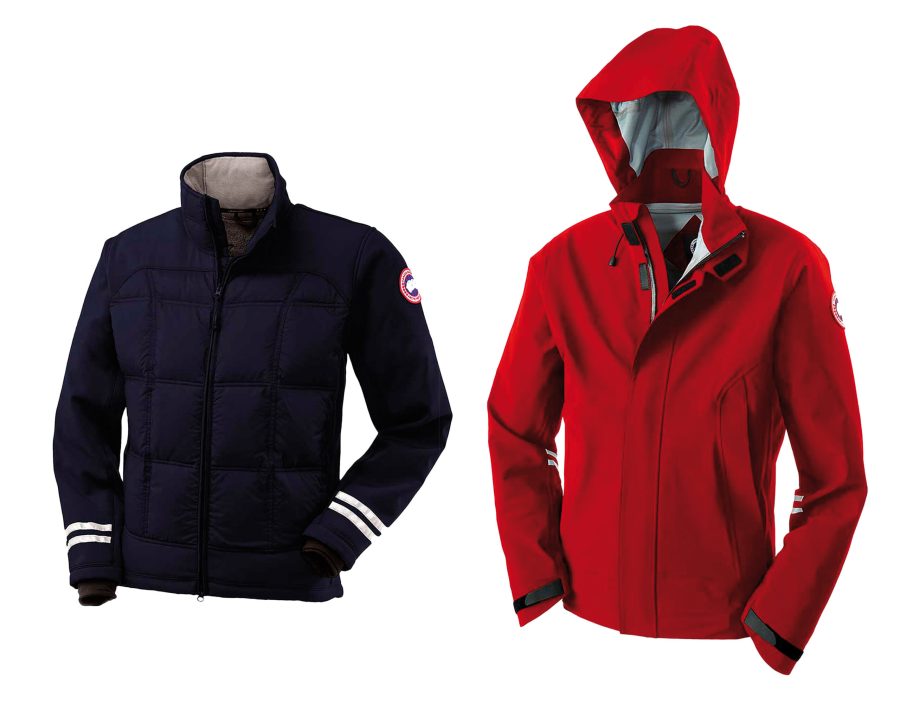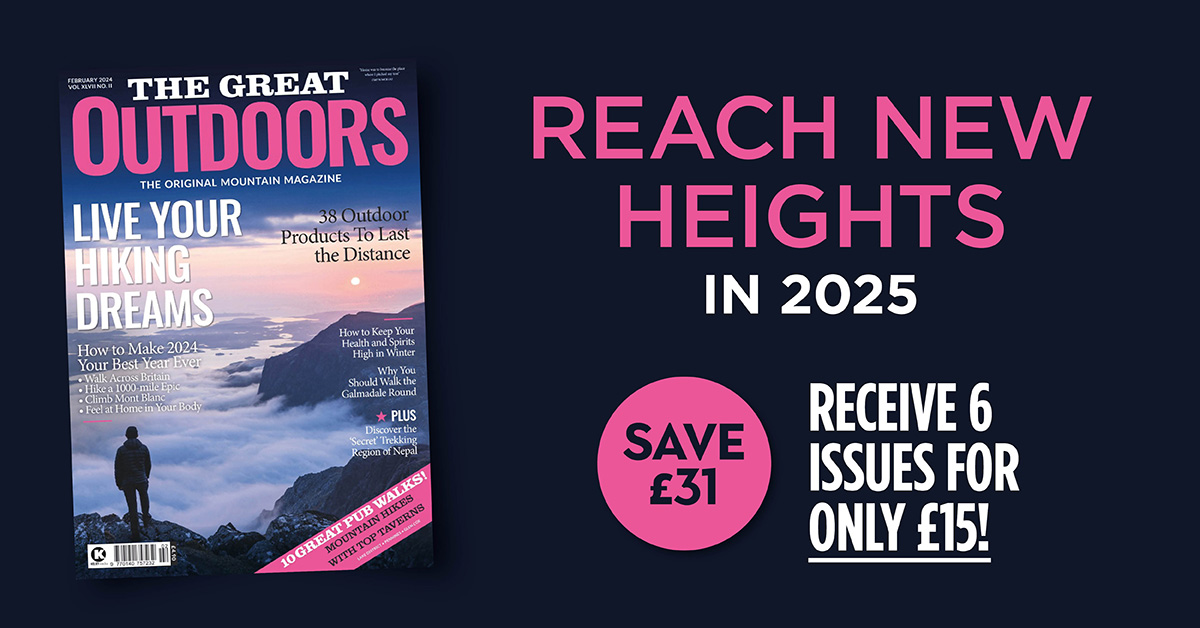NORTH AMERICAN BRAND Canada Goose undeniably prides itself on making its outdoor gear look sexy, but I was curious to see how well it would perform in action – and what better place to put it to the test than in the winter weather of Glen Coe and the Cairngorms? I carried out initial tests on two items: a hybrid softshell/down-filled jacket and a waterproof shell.
The HyBridge Jacket is packed with 750 fillpower Hutterite white duck down (from free-range flocks of birds, raised by the Hutterite people on the Canadian prairies) across the back and chest, with Canada Goose’s own Tri-Durance SS windproof softshell fabric on the sleeves and shoulders, allowing greater freedom of movement than a full down jacket. The softshell has a fleece backing for additional warmth and comfort against the skin.
The other jacket I tested, the Ridge Shell, uses tough and breathable three-layer laminated Tri-Durance HS hardshell fabric, with four-way stretch. I wore the two together – the insulated jacket fits snugly and is incredibly toasty, however the Shell was necessary to block out the harsh winds and snow on the summits.
Initial testing suggests that the durability of both items should be good. After two hours of throwing and torpedoing my torso down the snowy slopes of the Cairngorms while drilling ice axe arrests, the Shell showed absolutely no signs of wear. The HyBridge Jacket took its fair share of punishment on a scramble on the wet rocks of Glen Coe’s Lost Valley, but its material proved to be just as sturdy as that of the Shell, which, with the exception of some very slightly frayed stitching, survived the ordeal virtually unscathed.
The zipper pulls on both pieces of kit are chunky enough to use with thick, wooly gloves on, which is perfect if you’re like me and suffer from numb fingers at embarrassing speed. The zippered hand pockets of the HyBridge insulator are very warm, although they do become harder to access with a pack hipbelt in place. The outside pockets of the Ridge Shell are perfectly positioned and big enough to stuff an extra pair of gloves in, although I feel both jackets would have benefited with a larger internal pocket to store a map in.
My only real criticism of the Shell is the size of the hood. Even with its cords adjusted to bring it close to the head it’s on the large size and easily blown back in strong winds – I suspect it may be designed for wearing over a helmet. The HyBridge insulated jacket would benefit with a slightly longer cut at the back, which occasionally rides up. However, the breathability of both jackets is impressive, even with the Shell’s lack of underarm ventilation zips (it’ll be interesting to see how breathable it is in the coming warmer months, and I’ll report back online).
I’m not ashamed to admit that I can be occasionally vain in my choices of outdoor gear, but I can safely conclude that both these products are functionally excellent as well as stylish. The price is very high, but if they’re as durable as initial testing suggests, they should last for many winters.









